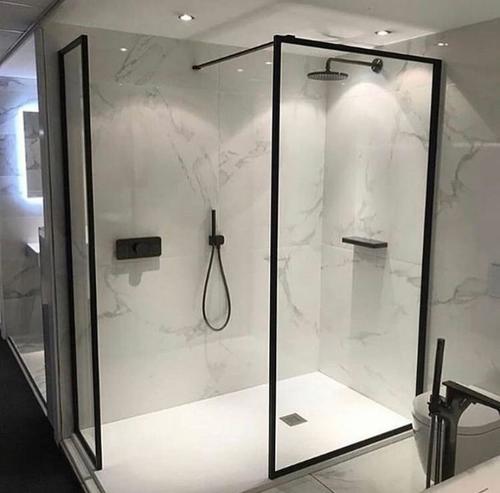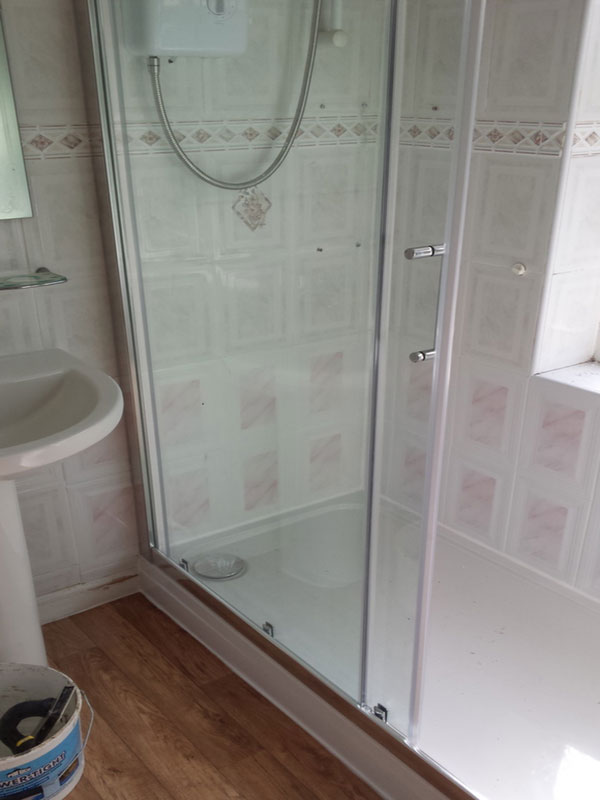We've stumbled upon this post about Simple ways to Install a Shower Cubicle on Your Own listed below on the web and reckoned it made good sense to relate it with you on this site.

An effective shower installment requires cautious preparation and a lot of job. Most of the times, you will need to do three kinds of jobs: framing wall surfaces, installing the plumbing, and completing wall surfaces.
Various Types of Shower Units
Most Typical Blunders
Prep work.
To start with, you have to decide on the type of shower that you want to set up. It is very important to identify whether the chosen shower is capable of dealing with specific systems as well as can control a risk-free degree of water via the central heating boiler. The majority of shower units nowadays are designed to be flexible to different water pressures (such as kept hot water as well as cool keys).
It is also important to take into account the water pressure and the planning of the piping and drainage for the shower.
Method.
Depending on the type of shower you wish to install, the shower head must either be suited order to prevent its contact with the water in the bathroom listed below or the base tray, or it needs to have a check shutoff.
Before starting, it is recommended to note the placements of the shower head and also control, and also to prepare the pipe-work included. Furthermore, the drain system to eliminate the waste water will need to be intended. Both placements of the wire path as well as the shower switch will also require to be taken into consideration if an immediate or electrical shower system is being installed.
Use the guideline overview supplied with the shower system to fit the shower control.Before fitting the pipelines that will provide the water to the shower system, it is very important to cut off the water supply. In order to protect the pipelines, they must be provided a waterproof covering as well as likewise fitted with isolating valves. The pipelines can after that be buried right into the wall and smudged over to neaten the general look.
Fit the base tray, shower head, and also installations.
Link the main shower control to the pipelines that will certainly be supplying the water (This might need a female screw string adapter).
Reconnect the water system and examination the pipelines for any leakages, as some might need firm.
If you are setting up an electrical shower, bear in mind to switch off the electricity supply prior to making any type of electric links. As soon as these connections have actually been made (there must be guidance within the user's manual), the power supply can be changed back on.
Adjusting Water Stress to Suit Your Shower.
The cold water storage tank can be lifted to a better height (sometimes as low as 150mm (6inches)) by fitting a solid wooden assistance beneath it - perhaps composed of struts and also blockboards. If you choose this alternative, the primary and also distribution pipelines will additionally have to be elevated to satisfy the brand-new height of the storage tank.
Alternatively, a booster pump (a solitary pump or a dual/twin pump) can be fitted. Whichever type is selected, it must be linked into the power supply in order to operate.
Piping and also Drain.
It is best to make use of 15mm diameter supply pipelines, and make the go to the shower as brief as well as straight as feasible so as to preserve optimal pressure and also minimise warm loss. In addition, by minimising using elbows for pipe edges, you can decrease the resistance in the flow of the water. You can achieve this by flexing the pipelines instead.
How Do You Install a Shower? Follow This Guide
Installing a Shower at a Glance
Tools & Materials: Level, electric drill, caulk, hole saw, cedar shims, shower unit Step 1: Drill pilot holes Step 2: Prep fixture holes Step 3: Move unit into place Step 4: Caulk corners and base Step 5: Attach door Step 6: Install shower pan Whenever plumbing is involved in a DIY project, people worry about what might go wrong. The truth is that installing a shower isn’t that complicated, and you can save a lot of money by doing it yourself. You shouldn’t need to make any alterations to your plumbing to complete the job, and most of the tools you need will be provided in your new shower kit.
Can I Install a Shower Myself?
Even if you’ve never installed a shower before, you’ll find this to be a project that is perfectly suited for DIYers with a moderate level of experience. Whether you're doing a bathtub conversion or installing a new stall, most of what you need comes in shower kits that you can purchase from a hardware store. The first thing you need to do is determine what type of shower stall you want.
Single-panel stalls are the easiest to install because they come preassembled. All you need to do is put them in place. Multi-panel showers require a few additional steps, but you’ve got more control over the appearance of your unit. Multi-panel units are also much easier to handle if you’re going to do the installation without any help.
Be sure to take all appropriate safety precautions, such as wearing eye protection and gloves. When you’re removing or installing a shower unit, you might kick up debris that could hurt your eyes. You’ll also need to work with equipment that will get extremely hot, so be sure to have safety gloves handy.
Tools and Materials
2- to 4-foot level Electric drill with a 1/8-inch drill bit Caulk 2-inch hole saw Cedar shims The unit itself Before You Begin: Prep the Space
It’s highly important to measure your space accurately before putting the stall in. Measuring from the floor upward and from each corner outward will ensure you’ve got the right measurements. What you’re looking for is where the plumbing apparatuses are going to come through the stall. Transfer these measurements over to the back of your unit by drawing the locations of these holes using a pencil or marker.
Pull out your old shower and make sure to scrape off all the old caulking. Be thorough because you want to work with smooth surfaces for the best installation. Once you’ve pulled out your existing shower, you need to make sure that the floor is clean and dry. The best way to clean debris is with a shop vacuum, as it’ll soak up water and dirt together.
If you’re experiencing any plumbing issues, such as low water pressure, this is a perfect opportunity to solve them. Make sure that the pipes themselves are not in need of patching and clean your showerhead. When you turn the water back on after your project, check the pipes for signs of wear or disrepair. Anything beyond minor repairs should be handled by a plumber, and this is the best time to bring in a professional.
If the floor has any moisture at all, don’t proceed until it’s completely dry. The last thing you need is for the floor to rot or invite mold and mildew into your base. Once everything is dry, apply waterproof wallboard to the walls. This can be attached with screws or nails, then sealed with caulk so that water doesn’t seep into any crevices.

As a person who reads on How to Install a Freestand, I figured sharing that article was really useful. You should set aside a second to distribute this article if you enjoyed it. Thanks so much for going through it.
Check This Out